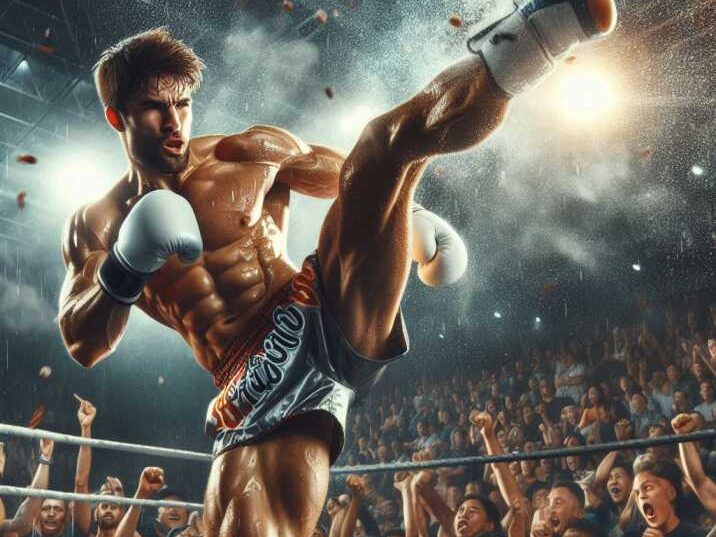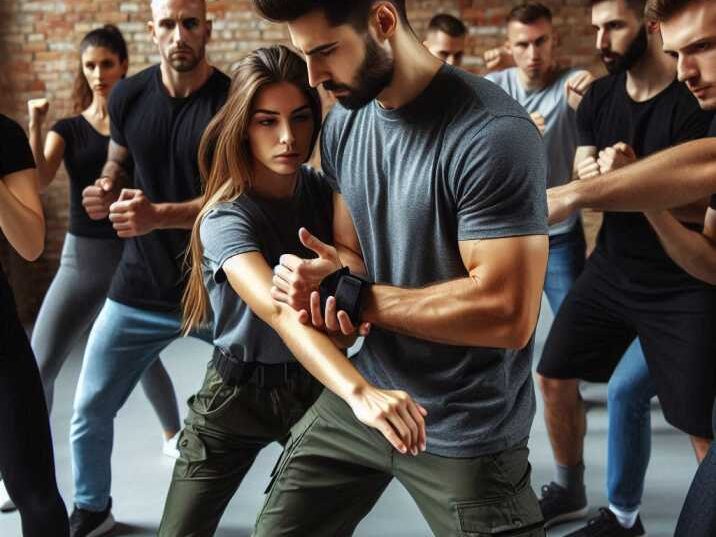Training requires concentration and discipline, which can translate to improved focus in school and other activities. Martial arts can teach self-defense, build confidence, and promote fitness. However, not all martial arts are created equally. Some are more brutal, intense, and demanding than others. This article explores the most brutal martial arts, those that push practitioners to their limits both mentally and physically.
In this guide, we’ll cover the most brutal martial art styles, why they are considered harsh, and how training in them can build focus and discipline. Let’s dive in and discover the most extreme martial arts that test both mind and body.

Introduction: What Defines a “Brutal” Martial Art?
Table of Contents
The term “brutal” in martial arts usually refers to intense training, powerful strikes, and techniques that could cause significant harm in real combat. These martial arts often focus on practicality, real-life self-defense, and survival tactics rather than traditional forms or competitive sports.
While brutal martial arts may seem harsh, they require immense discipline, focus, and control. For many practitioners, mastering these arts involves years of practice, dedication, and mental resilience.
Why Do People Train in Brutal Martial Arts?
Training in brutal martial arts may seem intimidating at first, but there are several powerful reasons why people choose these intense disciplines. Let’s break down the key motivations behind why many practitioners commit to these challenging martial arts.
1. Real-World Effectiveness
Brutal martial arts are often designed for real-life, high-stakes situations where the ability to defend oneself can mean the difference between life and death. Unlike traditional or sport-based martial arts that may have rules or restrictions, brutal martial arts focus on practical self-defense techniques that work in unpredictable environments.
- The martial arts focus on training practitioners to handle multiple attackers, weapons, and life-threatening situations. They prioritize speed, precision, and the ability to swiftly neutralize threats, which is essential in emergencies. The techniques are designed to effectively incapacitate an opponent without concern for adhering to competition rules or regulations. or regulations.
- They emphasize speed, precision, and the ability to neutralize a threat quickly, which is crucial in emergencies.
- Techniques are meant to disable an opponent effectively, without worrying about following competition rules or regulations.
For example, Krav Maga is widely known for its effectiveness in real-world combat, as it was developed for military use. It teaches techniques that allow practitioners to disarm attackers, deal with armed threats, and respond to dangerous scenarios quickly.
2. Physical and Mental Toughness
Many individuals train in intense martial arts to develop strong physical and mental resilience. These disciplines require more than just skill; they push practitioners to their limits, both physically and mentally.tally.
- Physical toughness: The intense training routines often involve sparring, bag work, conditioning exercises, and drills that can be grueling. Practitioners develop endurance, muscle strength, flexibility, and agility over time.
- Mental toughness: Martial arts like Muay Thai and Kyokushin Karate challenge the mind just as much as the body. Practitioners must learn to endure pain, stay calm under pressure, and persevere even when physically exhausted.
- Discipline and focus: Consistent practice builds mental strength, allowing students to focus deeply on their movements, control their emotions, and stay determined to improve.
Training in such brutal environments teaches individuals how to stay calm and think clearly under stress, which can benefit them in all areas of life—from school to professional work to everyday situations.
3. Confidence
Another key reason people train in demanding martial arts is the boost in confidence they gain. Mastering brutal techniques gives practitioners a sense of security, knowing they can defend themselves if the need arises.
- Self-assurance: As students progress, they develop a sense of achievement and self-assurance that extends beyond the martial arts dojo. Knowing how to fight and protect oneself brings a certain peace of mind.
- Preparedness: Martial arts like Lethwei or Brazilian Jiu-Jitsu prepare individuals for real-world scenarios where they might have to defend themselves or others. The ability to handle physical confrontations makes them feel safer and more in control of their surroundings.
- Overcoming fear: Through rigorous training, students learn how to handle fear and anxiety. Facing intense situations during sparring or drills helps them build the courage to face challenges with confidence, both in and out of the gym.
The Most Brutal Martial Arts in the World
Here, we’ll explore some of the most brutal martial arts that push human limits.
1. Muay Thai: The Art of Eight Limbs
Muay Thai is a powerful and aggressive martial art that originates from Thailand. It’s known as the “art of eight limbs” because practitioners use their fists, elbows, knees, and shins to strike opponents.
Why is Muay Thai Brutal?
- Full-contact combat: Muay Thai uses powerful strikes aimed at causing significant damage to opponents.
- Intense conditioning: Training in Muay Thai involves hours of conditioning, including sparring, bag work, and strength training.
- Combat-oriented techniques: Unlike some martial arts, Muay Thai focuses on real-world fighting and self-defense.
2. Krav Maga: The Martial Art of the Israeli Defense Forces
Krav Maga is a practical martial art developed by the Israeli military. Its techniques are designed to neutralize threats quickly and efficiently, often involving aggressive attacks aimed at vulnerable areas like the eyes, groin, and throat.

Why is Krav Maga Brutal?
- No rules: In Krav Maga, there are no regulations or competitions—anything goes in self-defense.
- Focus on survival: Techniques are brutal because they are meant to disable an attacker as fast as possible.
- Real-life scenarios: Practitioners train in realistic environments to simulate attacks.
3. Brazilian Jiu-Jitsu: The Gentle Art with a Twist
While Brazilian Jiu-Jitsu (BJJ) is often called “the gentle art” because it focuses on grappling and submissions rather than striking, it can still be brutal due to the extreme endurance and mental fortitude required to master the techniques.
Why is BJJ Brutal?
- Chokes and joint locks: BJJ techniques can cause severe pain or unconsciousness when executed correctly.
- Endurance and focus: Grappling requires intense mental focus and physical conditioning.
- Training intensity: Sparring sessions, or “rolling,” can be extremely demanding.
4. Kyokushin Karate: Full-Contact Karate
Kyokushin Karate is a full-contact style of karate where practitioners spar without protective gear, making it one of the most demanding forms of karate.
Why is Kyokushin Brutal?
- Full-contact sparring: Unlike many other karate styles, Kyokushin practitioners engage in full-contact fights.
- Breaking techniques: Practitioners break boards and bricks to condition their bodies for combat.
- Intense discipline: Kyokushin requires tremendous mental and physical discipline.
5. Lethwei: The Bare-Knuckle Combat of Myanmar
Lethwei, a martial art from Myanmar, is similar to Muay Thai but with one key difference: fighters don’t use gloves. Instead, they use bare knuckles, making the strikes even more dangerous.
Why is Lethwei Brutal?
- Bare-knuckle fighting: Lethwei fighters use their fists, elbows, knees, and feet to deliver powerful strikes.
- Headbutts allowed: Unlike many other martial arts, headbutts are a common and encouraged technique in Lethwei.
- Minimal protection: With no gloves and minimal padding, Lethwei matches can result in severe injuries.
The Importance of Discipline and Focus in Brutal Martial Arts
Training in brutal martial arts demands an exceptional level of discipline and focus. Practitioners must learn to control their strength and emotions to prevent injury, both to themselves and their training partners. The concentration required to master complex techniques and endure intense physical challenges often translates into improved focus in everyday life, including school, work, and other activities.
How Training Transforms the Mind and Body
Training in brutal martial arts is not just about learning how to fight—it also leads to remarkable changes in both the mind and body. Practitioners often experience transformations that make them stronger, more focused, and more disciplined. Let’s explore how these intense forms of martial arts can impact one’s mental and physical well-being.
1. Mental Toughness
One of the most important changes that brutal martial arts training brings is an increase in mental resilience. Facing difficult situations and enduring intense training sessions can teach practitioners how to stay calm and think clearly, even when under extreme pressure.
- Calm under pressure: In a fight or intense sparring match, practitioners must make split-second decisions, stay aware of their surroundings, and keep their emotions in check. This ability to remain calm under pressure is a skill that transfers to other parts of life, like school or work, where managing stress is essential.
- Overcoming fear: Martial arts training often pushes students out of their comfort zones, helping them confront and overcome fear. The mental strength built through practices like Muay Thai or Krav Maga prepares individuals to handle high-stress situations more confidently.
By continually facing challenges in training, practitioners develop the mental fortitude to face obstacles and stress with a clear mind, which can be beneficial in everyday life.
2. Physical Endurance
Brutal martial arts involve rigorous and physically demanding training that greatly enhances strength, flexibility, and endurance. The body undergoes intense conditioning that helps practitioners handle long training sessions, tough opponents, and real-life combat scenarios.
- Strength building: Training includes exercises like bag work, weight training, bodyweight exercises, and sparring. These activities build muscle strength, improve core stability, and increase overall fitness.
- Flexibility and agility: Many brutal martial arts, such as Capoeira or Lethwei, emphasize agility, fast movements, and flexibility. The constant movement, stretching, and reaction drills keep the body limber, improving joint health and flexibility over time.
- Endurance: Martial arts practitioners often engage in high-intensity interval training (HIIT) and other stamina-building exercises that improve cardiovascular health and endurance. Long sparring sessions or continuous practice routines test their ability to push past fatigue and perform under physical strain.
This increase in physical endurance not only benefits combat but also improves overall health, stamina, and energy levels in daily life.
3. Focus and Discipline
Concentration and discipline are critical components of brutal martial arts training. To master the complex techniques and movements, students must maintain laser-like focus during each practice session. This mental discipline naturally spills over into other areas of life, such as school and work.
- Total concentration: In martial arts, even the smallest mistake can result in a lost match or injury. This reality teaches practitioners to focus on every movement, block, and strike with full attention. Over time, this improves their ability to concentrate on tasks, whether they’re studying for a test or completing work assignments.
- Developing discipline: Consistent training in martial arts requires dedication and self-control. Practitioners often follow strict routines, stick to practice schedules, and push themselves to improve, even when it’s difficult. This helps build a strong sense of self-discipline, which is useful in achieving other goals, like academic success or personal development.
With the focus and discipline gained through martial arts, students often find themselves excelling in school, improving their time management skills, and staying motivated in all aspects of life.
Conclusion
The most brutal martial arts are not just about fighting—they are about mastering one’s mind and body. Whether it’s the intense strikes of Muay Thai, the survival tactics of Krav Maga, or the full-contact sparring of Kyokushin Karate, each of these martial arts tests both physical and mental limits. Discipline, focus, and resilience are key to mastering these arts. With proper training, practitioners can transform not only their bodies but also their minds, gaining skills that extend far beyond the mat.
FAQs:
1. What is the most brutal martial art?
Lethwei, a martial art from Myanmar, is considered one of the most brutal because it involves bare-knuckle fighting and allows headbutts.
2. Is Krav Maga dangerous?
Yes, Krav Maga can be dangerous due to its focus on real-life self-defense, using techniques aimed at disabling an opponent as quickly as possible.
3. Can children practice brutal martial arts?
While children can practice martial arts, they usually start with less intense styles before progressing to more demanding forms.
4. Why are brutal martial arts beneficial?
They build mental toughness, discipline, and self-confidence, while also improving physical strength and endurance.
5. How long does it take to master a brutal martial art?
It varies, but mastering a brutal martial art can take many years of consistent practice and dedication.


